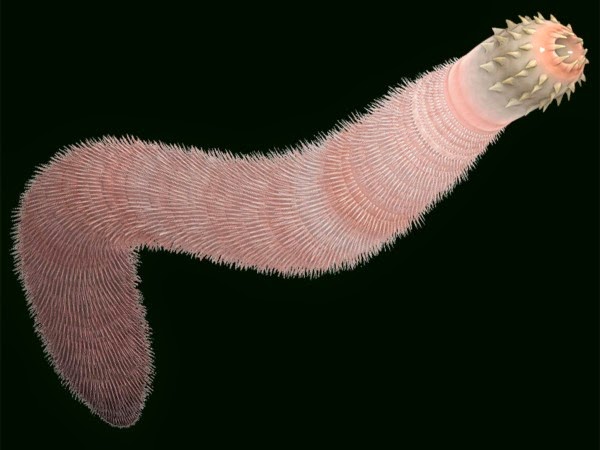
You can credit your existence to tiny wormlike creatures that lived 500 million years ago, a new study suggests. By tunneling through the sea floor, scientists say, these creatures kept oxygen concentrations at just the right level to allow animals and other complex life to evolve. The finding may help answer an enduring mystery of Earth’s past.
At the dawn of the Cambrian period about 570 million years ago, multicellular organisms were just beginning to appear, largely in the oceans. But for animals to evolve, the concentration of oxygen in the ocean and atmosphere had to be just right. Too little oxygen, and nascent animals would have suffocated. Too much, and lightning strikes would have created catastrophic fires, torching the primordial land vegetation. “How come oxygen levels didn’t crash or double?” says Tais Dahl, a geochemist at the University of Southern Denmark (SDU), Odense. “Something [regulated] oxygen in relatively narrow limits.”
A key moment in the evolution of the new study was when Dahl met Richard Boyle, a geochemical modeler who was then at the University of Exeter in the United Kingdom. Dahl was puzzled by data he and others had collected from rock outcroppings that were once on the floor of the ocean. For 30 million years, beginning 530 million years ago, the oxygen levels of the ocean dropped steadily, four different sets of chemical measurements suggested.
Boyle, now at SDU, had developed a hypothesis that might explain why. By burrowing, he reasoned, seafloor creepy-crawlies that lived at the start of the Cambrian kick-started a complex chain of events that altered the chemical composition of Earth. In the new study, the two scientists and their colleagues use a simple model to spell out their proposed mechanism. The idea is that as they dug and wiggled, these early multicellular creatures—some were likely worms as long as 40 cm—exposed new layers of seafloor sediment to the ocean’s water. Each new batch of sediment that settles onto the sea floor contains bacteria; as those bacteria were exposed to the oxygen in the water, they began storing a chemical called phosphate in their cells. So as the creatures churned up more sediment layers, more phosphate built up in ocean sediments and less was found in seawater.
Because algae and other photosynthetic ocean life require phosphate to grow, removing phosphate from seawater reduced their growth. Less photosynthesis, in turn, meant less oxygen released into the ocean. In this way, the system formed a negative feedback loop that automatically slowed the rise in oxygen levels as the levels increased. What kept the oxygen levels from getting too low? Less oxygen in the water also meant fewer worms, so less oxygen-reducing digging, the researchers explain. “We think these animals may have completely transformed geochemical cycles,” says Dahl, whose team reported its work online this week in Nature Geoscience.
“Although we are still far from knowing to what extent worms and their ilk influenced the geochemical history of our planet, this is a novel and testable hypothesis, which will inspire novel thinking,” writes Filip Meysman, a biogeochemist at the Royal Netherlands Institute for Sea Research in Yerseke, in a commentary on the research in Nature Geoscience. But he cautions that the rapid increase in the extent of worms’ burrowing modeled in the new study may have been limited to some areas of the ancient ocean and has yet to be shown to be a global phenomenon.
“In hindsight, the result isn’t particularly surprising or counterintuitive,” adds biogeochemist Lee Kump of Pennsylvania State University, University Park, in an e-mail to Science. Still, he says, “I wish I’d thought of that.”
Note : The above story is based on materials provided by Eli Kintisch “American Association for the Advancement of Science”










